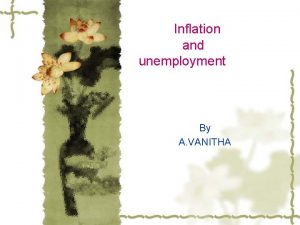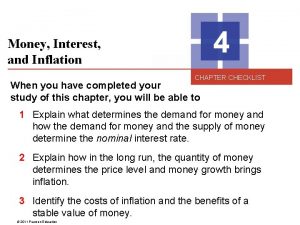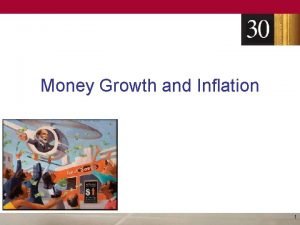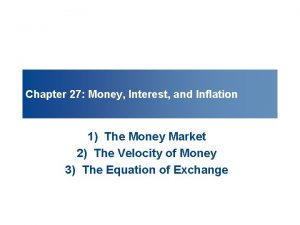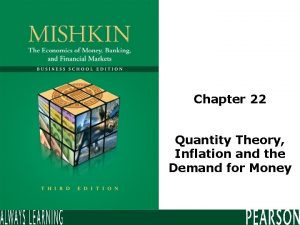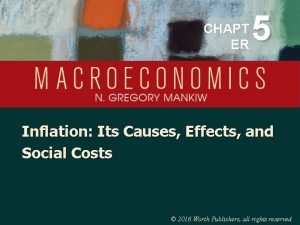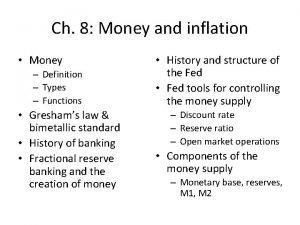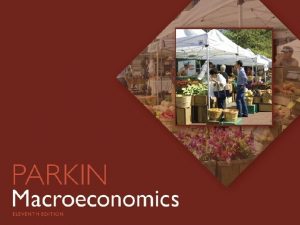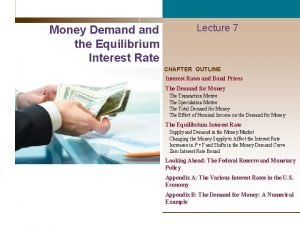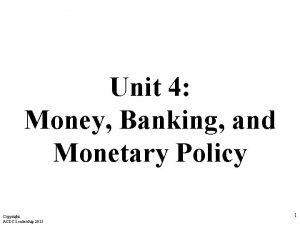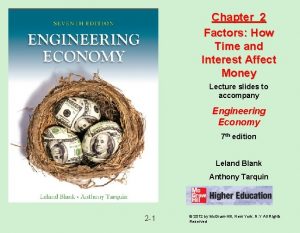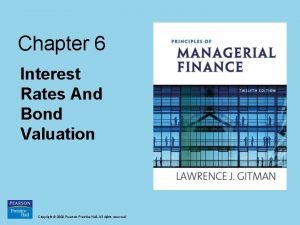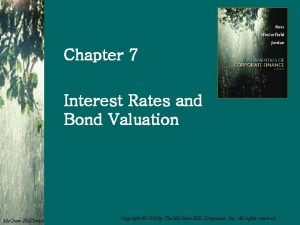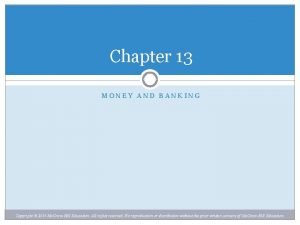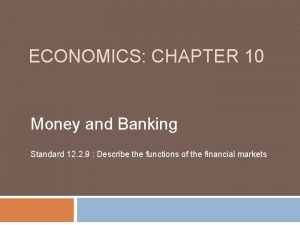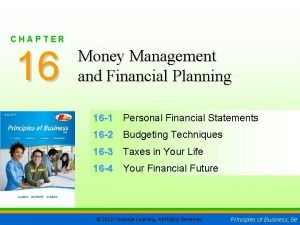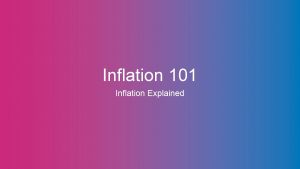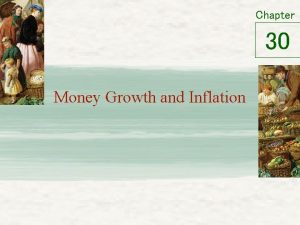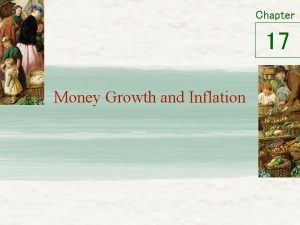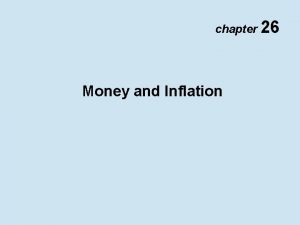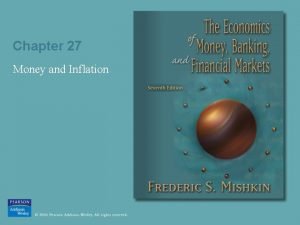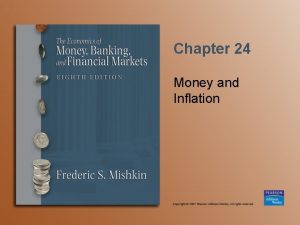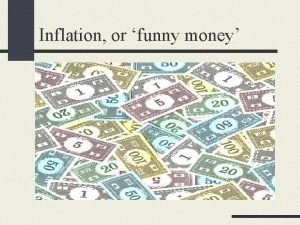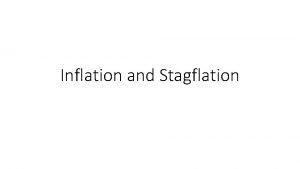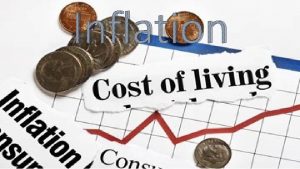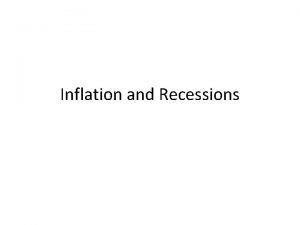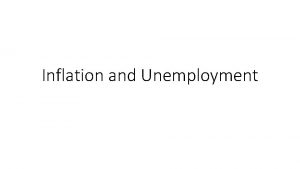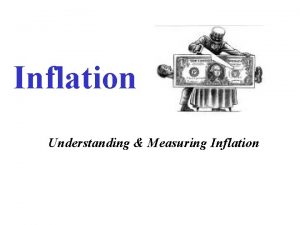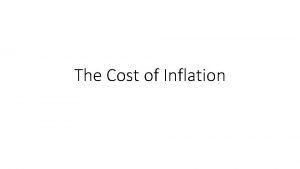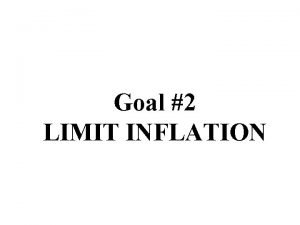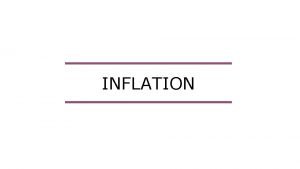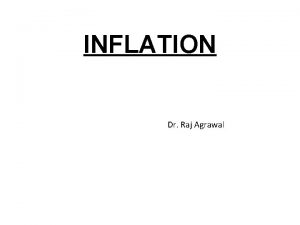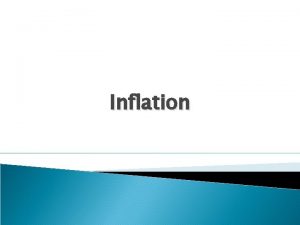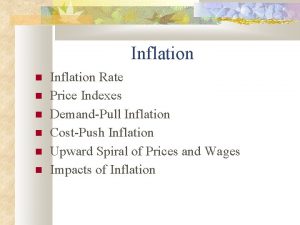4 Money Interest and Inflation CHAPTER CHECKLIST When




























- Slides: 28

4 Money, Interest, and Inflation CHAPTER CHECKLIST When you have completed your study of this chapter, you will be able to 1 Explain what determines the demand for money and how the demand for money and the supply of money determine the nominal interest rate. 2 Explain how in the long run, the quantity of money determines the price level and money growth brings inflation. 3 Identify the costs of inflation and the benefits of a stable value of money. © 2011 Pearson Education

WHERE WE ARE AND WHERE WE’RE HEADING < The Real Economy Real factors that are independent of the price level determine potential GDP and the natural unemployment rate. Investment demand saving supply determine the amount of investment, the real interest rate and, along with population growth, human capital growth, and technological change, determine the growth rate of real GDP.

WHERE WE ARE AND WHERE WE’RE HEADING <The Money Economy Money—the means of payment—consists of currency and bank deposits. Banks create money and the Fed influences the quantity of money through its open market operations, which determines the monetary base and the federal funds rate. Here we explore the effects of money on the economy.

WHERE WE ARE AND WHERE WE’RE HEADING <Real and Money Interactions and Policy The effects of money can be best understood in two steps: • The effects of the Fed’s actions on the short-term nominal interest rate • The long-run effects of the Fed’s actions on the price level and the inflation rate

4. 1 MONEY AND THE INTEREST RATE < The Demand for Money Quantity of money demanded is the amount of money that households and firms choose to hold. Benefit of Holding Money The benefit of holding money is the ability to make payments. The more money you hold, the easier it is for you to make payments.

4. 1 MONEY AND THE INTEREST RATE The marginal benefit of holding money decreases as the quantity of money held increases. Opportunity Cost of Holding Money The opportunity cost of holding money is the interest forgone on an alternative asset. Opportunity Cost: Nominal Interest is a Real Cost The opportunity cost of holding money is the nominal interest because it is the sum of the real interest rate on an alternative asset plus the expected inflation rate, which is the rate at which money loses buying power.

4. 1 MONEY AND THE INTEREST RATE The Demand for Money Schedule and Curve The demand for money is the relationship between the quantity of money demanded and the nominal interest rate, when all other influences on the amount of money that people want to hold remain the same. Figure 12. 1 on the next slide illustrate the demand for money.

4. 1 MONEY AND THE INTEREST RATE The lower the nominal interest rate —the opportunity cost of holding money—the greater is the quantity of money demanded.

4. 1 MONEY AND THE INTEREST RATE Other things remaining the same, 1. An increase in the nominal interest rate decreases the quantity of real money demanded. 2. A decrease in the nominal interest rate increases the quantity of money demanded.

4. 1 MONEY AND THE INTEREST RATE < Changes in the Demand for Money A change in the nominal interest rate brings a change in the quantity of money demanded. A change in any other influence on money holdings changes the demand for money. The three main influences are • The price level • Real GDP • Financial technology

4. 1 MONEY AND THE INTEREST RATE The Price Level An x percent rise in the price level brings an x percent increase in the quantity of money that people plan to hold because the number of dollars we need to make payments is proportional to the price level. Real GDP The demand for money increases as real GDP increases because expenditures and incomes increase when real GDP increases.

4. 1 MONEY AND THE INTEREST RATE Financial Technology Daily interest on checking deposits, automatic transfers between checking and savings accounts, automatic teller machines, debit cards, and smart cards have increased the marginal benefit of money and increased the demand for money. Credit cards have made it easier to buy goods and services on credit and have decreased the demand for money.

4. 1 MONEY AND THE INTEREST RATE < The Supply of Money The supply of money is the relationship between the quantity of money supplied and the nominal interest rate. The quantity of money supplied is determined by the actions of the banking system and the Fed. On any given day, the quantity of money is fixed independent of the interest rate.

4. 1 MONEY AND THE INTEREST RATE < The Nominal Interest Rate The nominal interest rate adjusts to make the quantity of money demanded equal the quantity of money supplied. On a given day, the price level, real GDP, and state of financial technology is fixed, so the demand for money is given.

4. 1 MONEY AND THE INTEREST RATE The nominal interest rate is the only influence on the quantity of money demanded that is free to fluctuate to achieve money market equilibrium. Figure 12. 2 on the next slide illustrates money market equilibrium and the adjustment toward equilibrium.

4. 1 MONEY AND THE INTEREST RATE 1. If the interest rate is 6 percent a year, the quantity of money held exceeds the quantity demanded. People buy bonds, the price of a bond rises, and the interest rate falls. As the nominal interest rate falls, the quantity of money demanded increases.

4. 1 MONEY AND THE INTEREST RATE 2. If the interest rate is 4 percent a year, the quantity of money held is less than the quantity demanded. People sell bonds, the price of a bond falls, and the interest rate rises. A rise in the nominal interest rate decreases the quantity of money demanded.

4. 1 MONEY AND THE INTEREST RATE 3. If the interest rate is 5 percent a year, the quantity of money held equals the quantity demanded. The money market is in equilibrium.

4. 1 MONEY AND THE INTEREST RATE <Changing the Interest Rate To change the interest rate, the Fed changes the quantity of money. If the Fed increases the quantity of money, the interest rate falls. If the Fed decreases the quantity of money, the interest rate rises. Figure 12. 3 on the next slide illustrates these changes.

4. 1 MONEY AND THE INTEREST RATE 1. If the Fed increases the quantity of money and the supply of money curve shifts to MS 1, the interest rate falls to 4 percent a year. 2. If the Fed decreases the quantity of money and the supply of money curve shifts to MS 2, the interest rate rises to 6 percent a year.

4. 2 MONEY, THE PRICE LEVEL, AND INFLATION The lower the “price” of money, the greater is the quantity of money that people are willing to hold. The “price “ of money is the value of money. The Value of Money The value of money is the quantity of goods and services that a unit of money will buy. It is the inverse of the price level, P, which equals the GDP price index divided by 100. That is, Value of money = 1/P.

4. 2 MONEY, THE PRICE LEVEL, AND INFLATION A key proposition about the quantity of money and the price level is that: In the long run and other things remaining the same, a given percentage change in the quantity of money brings an equal percentage change in the price level.

4. 2 MONEY, THE PRICE LEVEL, AND INFLATION <The Quantity Theory of Money Quantity theory of money is the proposition that when real GDP equals potential GDP, an increase in the quantity of money brings an equal percentage increase in the price level (other things remaining the same).

4. 2 MONEY, THE PRICE LEVEL, AND INFLATION The Velocity of Circulation and Equation of Exchange Velocity of circulation is the number of times in a year that the average dollar of money gets used to buy final goods and services. Equation of exchange is an equation that states that the quantity of money multiplied by the velocity of circulation equals the price level multiplied by real GDP.

4. 2 MONEY, THE PRICE LEVEL, AND INFLATION Define: • The velocity of circulation = V • The quantity of money = M • The price level = P • Real GDP = Y Then the equation of exchange is M V=P Y

4. 2 MONEY, THE PRICE LEVEL, AND INFLATION The Quantity Theory Prediction The equation of exchange, M V = P Y, implies that P = M V Y. On the left is the price level and on the right are all the things that influence the price level. These influences are the quantity of money, the velocity of circulation, and real GDP.

4. 2 MONEY, THE PRICE LEVEL, AND INFLATION <Inflation and the Quantity Theory of Money The equation of exchange tells us the relationship between the price level, the quantity of money, the velocity of circulation, and real GDP. This equation implies a relationship between the rates of change of these variables, which is Money growth + Velocity growth = Inflation rate + Real GDP growth Figure on the next slide illustrates the relationship.

4. 2 MONEY, THE PRICE LEVEL, AND INFLATION <Hyperinflation If the quantity of money grows rapidly, the inflation rate will be very high. An inflation rate that exceeds 50 percent a month is called hyperinflation. Highest inflation rate in recent times was in Zimbabwe, where inflation peaked at 231, 150, 888. 87 percent a year in July 2008.
 Dana damian
Dana damian Quantity theory of money economics
Quantity theory of money economics Introduction of inflation
Introduction of inflation Inflation checklist
Inflation checklist Costs of inflation
Costs of inflation Velocity of money
Velocity of money Quantity theory of money inflation
Quantity theory of money inflation Quantity theory of money inflation
Quantity theory of money inflation Money inflation definition
Money inflation definition Quantity theory of money inflation
Quantity theory of money inflation Nominal v. real interest rates
Nominal v. real interest rates Compound interest multiplier
Compound interest multiplier Money demand and interest rate
Money demand and interest rate Money supply and interest rate
Money supply and interest rate Geometric gradient formula
Geometric gradient formula Effective versus nominal interest rates
Effective versus nominal interest rates Character analysis tom buchanan
Character analysis tom buchanan Money smart money match
Money smart money match Money on money multiple
Money on money multiple Context of great gatsby
Context of great gatsby Old money vs new money
Old money vs new money Chapter 7 interest rates and bond valuation
Chapter 7 interest rates and bond valuation How to find the price of a bond
How to find the price of a bond Chapter 6 interest rates and bond valuation
Chapter 6 interest rates and bond valuation Chapter 7 interest rates and bond valuation
Chapter 7 interest rates and bond valuation Chapter 6 interest rates and bond valuation
Chapter 6 interest rates and bond valuation Chapter 13 money and the banking system answers
Chapter 13 money and the banking system answers Chapter 10 money and banking
Chapter 10 money and banking Chapter 16 money management and financial planning
Chapter 16 money management and financial planning


